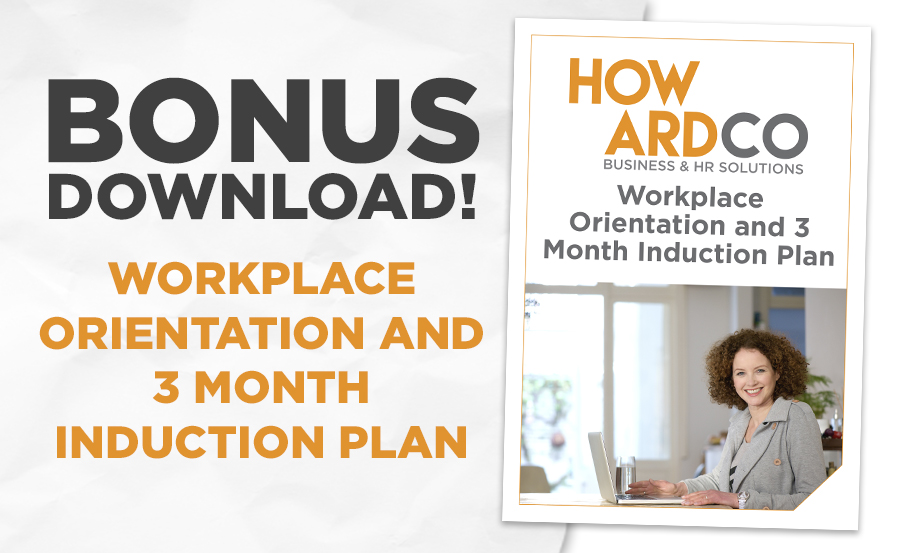Induction: 5 ways to reduce staff turnover
Is staff turnover hurting your business? Are you tired of hiring people only to find they are leaving soon after? Or have you just accepted that turnover is part of business? As one client said to me “I want to hire two people for this job. Why? Because I know one will leave!” So, what can you do to make sure you hire and retain the best people and not become a turnover statistic?

1. Selection.
The first thing to examine is your selection process. Do you have one and is it followed every time? One of the most common causes of failure in retention is lack of sound recruitment process or worse still failing to follow it! You need to look at every aspect of your selection process from the job description, advertising, screening, interviewing, reference checking through to appointment and look for the failure points.
2. Induction.
“I want them to hit the ground running.” I would like a dollar for every time I have heard that request. Yet how long does it take for someone to come up to speed? Well, it depends on the job and the level but at the minimum, it can take 3 months and even up to a year for more senior roles. So how do you want this to pan out? Sink or swim or setting them up for success? Look at your onboarding and induction process. Do you have clear, defined milestones and actions for the first 3 months? You need an Induction Plan.
3. Training.
‘Set and forget’ may work for a machine but even then, it will require programming and maintenance. One of the main reasons good people are attracted to a role or an organisation is the opportunity for training. Today’s top talent want to know what they will learn and how your business promotes development and growth. Examine the learning pathways in the business. Does training stop at induction or do you have a development planning process to ensure you are providing ongoing investment in your most valuable resource?
4. Feedback.
Are there disconnects in your retention strategy? By this I mean are there gaps between what is expected and what actually is happening on the ground? How are you ensuring that you are in touch with what is really the cause of turnover? You need feedback and so do your new recruits. The first three months are the most critical time in the retention cycle, people are deciding “will I stay or will I go” and you are wondering if they will work out. Take the guesswork out of it, and build feedback into your monthly review cycle. One question I love to ask is “Is the job as you expected it to be”.
5. Exit interview.
The final opportunity to learn how to improve your retention rate is to ask the people who are leaving. This article on SEEK explores the benefits of exit interviews. This may be your best chance to get some candid feedback on what is working and what is not. Don’t be afraid of the answers. The exit interview is a vital link in the feedback loop of continuous improvement. Seek feedback across the board from the recruitment process to induction and training through to pay and conditions and the culture. On the last point, one of the key factors employers and employees look for is a cultural fit, but you need to check, is your culture delivering on the promise?
Tackling the turnover issue requires a systematic and strategic approach to identify causes and build a robust system based on continuous improvement. Making retention a key strategic driver for your business will not only save you time and money in recruitment but also enable you to build a competitive and sustainable business for the future.



















